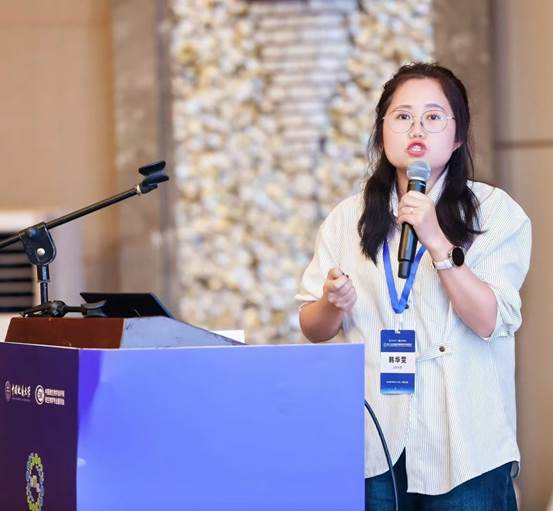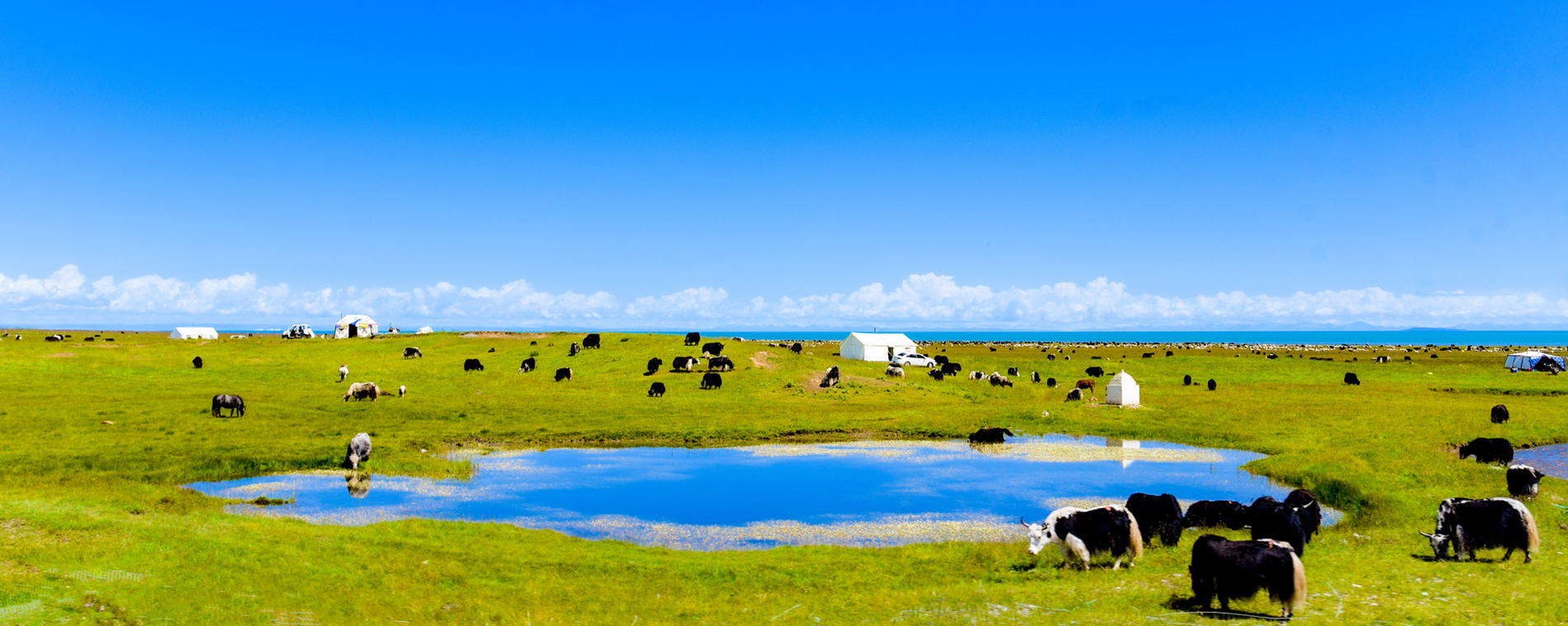
一、个人简介
韩华雯,兰州大学草地微生物研究中心青年研究员,硕士生导师。主要从事微生物蛋白组及合成微生物组相关的工作,曾获中国草业科技奖二等奖,在Microbiome、Environmental Science & Technology、npj Biofilms and Microbiomes、Environmental Microbiology、Journal of Hazardous Materials、Chemical Engineering Journal、Journal of Cleaner Production等微生物主流刊物发表论文30余篇,其中以第一或通讯作者(含共同)发表论文20余篇,H指数16,参编中英文著作4部,申请专利3项。先后主持国家自然科学基金面上项目及青年基金项目,甘肃省科技重大专项子课题等。
电子邮件:hanhuawen@lzu.edu.cn
通讯地址:甘肃省兰州市城关区天水南路222号岫云楼309
二、 教育和科研经历
2006.09-2010.06:甘肃农业大学草业学院,草业科学,学士
2010.09-2013.06:甘肃农业大学草业学院,草业科学,硕士,导师:姚拓教授
2013.09-2018.12:兰州大学生命科学学院,微生物学,博士,导师:李祥锴教授
2019.06-2021.12:兰州大学生态学流动站,土壤微生物,师资博士后,合作导师:李祥锴/尚占环教授
2022.09-至今:兰州大学,草地微生物研究中心/草地农业科技学院,青年研究员
三、获奖情况与学术兼职
1. 荣获中国草业科技奖二等奖。
2. 入选2016年度中国精品科技期刊顶尖学术论文。
3. 荣获环境微生物学会“简浩然基金”。
4. 2021年-至今,担任环境科学领域期刊Journal of Hazardous Materials期刊审稿人。
5. 2023年-至今,担任微生物学领域期刊Microbiome及Gut Microbes期刊审稿人。
四、承担科研项目
1.国家自然科学基金面上项目,高原鼠兔肠道微生物降解PVC塑料分子机制,2025.1-2028.12,50万,主持。
2.甘肃省科技重大专项,“一带一路”国家传统发酵食品益生菌资源的开发与利用,2024.08-2027.08,130万元,子课题主持人。
3.兰州大学人才引进科研启动基金,2022.09-2027.08,100万,主持。
4.国家自然科学基金委青年科学基金项目,新型铬还原酶GcrR底物识别与还原机理研究,2023.01—2025.12,30万,主持。
5.甘肃省级重点人才项目青年个人项目, 益生菌对塑料及木质素的降解机制, 2024-03 至 2025-03, 6万元, 在研, 主持。
6.中央高校基金,博士后创新探索项目,基于生物炭固定化PETase修复土壤微塑料污染的研究,2020.01—2021.12,5万,主持。
7.兰州大学拔尖创新人才培养计划项目,磁性生物碳固定化铬还原酶在含铬废水中应用,2018.01—2019.01,2万,主持。
8.甘肃省科协项目,西北传统发酵食品“浆水”益生菌缓解痛风的机理研究与开发应用,2021.07至2022.12,30万,参加。
9.中国科协项目“科创中国”甘肃浆水产业区域科技服务团,2022.01—2022-12, 40万,参加。
10.国家自然科学基金面上项目,黄粉虫幼虫肠道不可培养微生物中高效塑料降解新基因开发,2021.01—2024.12,50万,参加。
五、主要科研成果(*通讯作者,#共同一作)
1. Tursunay, M., Ouyang, X., Wu, W., Zhou, T., Hou, X., Khan, A., Liu, P., ...Han, H*& Li, X* (2024). Novel Feruloyl Esterase for the Degradation of Polyethylene Terephthalate (PET) Screened from the Gut Microbiome of Plastic-degrading Mealworms (Tenebrio molitorlarvae).Environmental Science & Technology.(IF=10.8, Top 1区).
2. Zhou, T., Wu, J., Khan, A., Hu, T., Wang, Y., Salama, E. S., ...Han, H*& Li, X*. (2024). A probiotic Limosilactobacillus fermentum GR-3 mitigates colitis-associated tumorigenesis in mice via modulating gut microbiome.npj Science of Food, 8(1), 61.(IF=6.3, Top 1区).
3. Jiang, Y., Zhou, C., Khan, A., Zhang, X., Mamtimin, T., Fan, J., ...Han, H*& Li, X*. (2024). Environmental risks of mask wastes binding pollutants: Phytotoxicity, microbial community, nitrogen and carbon cycles.Journal of Hazardous Materials, 476, 135058(IF=13.6, Top 1区).
4. Han, H., Song, P., Jiang, Y., Fan, J., Khan, A., Liu, P., ... & Li, X*. (2024). Biochar immobilized hydrolase degrades PET microplastics and alleviates the disturbance of soil microbial function via modulating nitrogen and phosphorus cycles.Journal of Hazardous Materials, 474, 134838.(IF=13.6, Top 1区)
5. Zhou, T., Wu, J., Tang, H., Liu, D., Jeon, B. H., Jin, W., ...Han, H*.,& Li, X*. (2024). Enhancing tumor-specific recognition of programmable synthetic bacterial consortium for precision therapy of colorectal cancer.npj Biofilms and Microbiomes, 10(1), 6.(IF=9.20, Top 1区)
6. Mamtimin, T.,Han, H*., Khan, A., Feng, P., Zhang, Q., Ma, X., ... & Li, X*. (2023). Gut microbiome of mealworms (Tenebrio molitorLarvae) show similar responses to polystyrene and corn straw diets.Microbiome, 11(1), 1-20.(IF=16.83, Top 1区)
7. Tang, H., Zhou, T., Jin, W., Zong, S., Mamtimin, T., Salama, E. S., ...Han, H*.& Li, X*. (2023). Tumor-targeting engineered probioticEscherichia coliNissle 1917 inhibits colorectal tumorigenesis and modulates gut microbiota homeostasis in mice.Life Sciences, 324, 121709(IF=6.78, 2区)
8. Han, H*., Zhang, Y., Tang, H., Zhou, T., & Khan, A. (2024). A Review of the Use of Native and Engineered Probiotics for Colorectal Cancer Therapy.International Journal of Molecular Sciences, 25(7), 3896.(IF=6.2, 2区)
9. Han, H.,Song, P., Cai, Z., Dong, W., Khan, A.,& Li, X*. (2022). Immobilizing chromate reductase NfoR on magnetic biochar reduced Cr(VI) in copper-containing wastewater.Journal of Cleaner Production(IF=11.07, Top 1区)
10. Han, H.,Zheng, Y., Zhou, T., Liu, P., & Li, X*. (2021). Cu (II) nonspecifically binding chromate reductase NfoR promotes Cr (VI) reduction.Environmental Microbiology, 23(1), 415-430.(IF=5.49,2区)
11. Zhao, S., Feng, P., Hu, X., Cao, W., Liu, P.,Han, H*., ... & Li, X*. (2022). Probiotic Limosilactobacillus fermentum GR-3 ameliorates human hyperuricemia via degrading and promoting excretion of uric acid.iScience, 105198(IF=6.01,2区).
12. Han, H.,Buss, W., Zheng, Y., Song, P., Rafiq, M. K., Liu, P., ... & Li, X. (2021). Contaminants in biochar and suggested mitigation measure-a review.Chemical Engineering Journal,132287(IF=13.27, Top 1区)
13. Han, H.,Rafiq, M. K., Zhou, T., Xu, R., Mašek, O., & Li, X*. (2019). A critical review of clay-based composites with enhanced adsorption performance for metal and organic pollutants.Journal of hazardous materials, 369, 780-796(IF=10.59,Top 1区,高被引论文)
14. Han, H., Ling, Z., Khan, A., Virk, A. K., Kulshrestha, S., & Li, X*. (2019). Improvements of thermophilic enzymes: From genetic modifications to applications.Bioresource technology, 279, 350-361(IF=9.64,Top 1区)
15. Han, H.,Ling, Z., Zhou, T., Xu, R., He, Y., Liu, P., & Li, X*. (2017). Copper (II) binding of NAD (P) H-flavin oxidoreductase (NfoR) enhances its Cr (VI)-reducing ability.Scientific reports,7(1), 1-12(IF=4.38,3区)
16. Song, P.#,Han, H.#, Feng, H., Yun H., Zhou, T., & Li, X*. (2022).High altitude relieves transmission risks of COVID-19 through meteorological and environmental factors: evidence from China.(IF=6.49,2区)
17. Yu, Z.#,Han, H.#, Feng, P., Zhao, S., Zhou, T., Kakade, A., ... & Li, X*. (2020). Recent advances in the recovery of metals from waste through biological processes.Bioresource technology, 297, 122416(IF=9.64,Top 1区)
18. Zhou, T.#,Han, H.#, Liu, P., Xiong, J., Tian, F., & Li, X*. (2017). Microbial fuels cell-based biosensor for toxicity detection: A review.Sensors, 17(10), 2230(IF=4.2,3区)
19. Han, H.,Huang, H., & Li, X*. (2020). Current Policies and Policy Implications for Environmental Pollution. In Gut Remediation of Environmental Pollutants (pp. 219-245). Springer, Singapore.
20. Li, X,Han, H. Uranium: sources, exposure and enviromental effects. Chapter10-Microbial uranium resistance and remediation. Nova Science Publishers, Inc. New York, 2015.
21. Khan, A., Li, S.,Han, H., Jin, W. L., Ling, Z., Ji, J., ... & Li, X. (2023). A gluten degrading probiotics relieves CeD symptom and normalize immune system in mice A gluten degrading probioticBacillus subtilisLZU-GM relieve adverse effect of gluten additive food and balances gut microbiota in mice.Food Research International, 112960(IF=7.42,Top1区).
22. Zhou, T., Zhang, S.,Han, H., & Li, X. (2019). Using Microbial Fuel Cell System as Biosensors. Waste to Sustainable Energy: MFCs–Prospects through Prognosis, 283-312.
23. Feng, P., Ye, Z.,Han, H., Ling, Z., Zhou, T., Zhao, S., ... & Li, X*. (2020). Tibet plateau probiotic mitigates chromate toxicity in mice by alleviating oxidative stress in gut microbiota.Communications biology, 3(1), 1-12(IF=6.2,2区)
24. Xu, R#., Wu, K#.,Han, H.,Ling, Z., Chen, Z., Liu, P., ... & Li, X*. (2018). Co-expression of YieF and PhoN inDeinococcus radioduransR1 improves uranium bioprecipitation by reducing chromium interference.Chemosphere, 211, 1156-1165(IF=4.4,2区,第二作者)
25. Kakade, A., Salama, E. S.,Han, H., Zheng, Y., Kulshrestha, S., Jalalah, M., ... & Li, X*. (2021). World eutrophic pollution of lake and river: Biotreatment potential and future perspectives.Environmental Technology & Innovation, 101604(IF=4.4,2区).
26. Xu, R., Zhang, K., Liu, P.,Han, H.,Zhao, S., Kakade, A., ... & Li, X. (2018). Lignin depolymerization and utilization by bacteria.Bioresource technology, 269, 557-566(IF=9.64,Top 1区)
27. Xu, R., Zhang, K., Xie, S., Liu, P., Yu, Z.,Han, H.,... & Li, X*. (2021). Evaluation of electricity production from paper industry wastewater by Cellulomonas iranensis LZ-P1 isolated from giant panda.Journal of Cleaner Production,278, 123576(IF=9.30,Top1区)
28. Zhou, T., Wu, J., Zeng, Y., Li, J., Yan, J., Meng, W.,Han, H. ... & Li, X*. (2022). SARS‐CoV‐2 triggered oxidative stress and abnormal energy metabolism in gut microbiota.MedComm, 3(1), 41-56.
29. Bai, Y., Rafiq, M. K., Li, S., Degen, A. A., Mašek, O., Sun,Han, H.,… & Shang, Z*. (2021). Biochar from pyrolyzed Tibetan Yak dung as a novel additive in ensiling sweet sorghum: An alternate to the hazardous use of Yak dung as a fuel in the home.Journal of Hazardous Materials, 403, 123647(IF=10.59,Top 1区).
30. Zhou, T., Li, R., Zhang, S., Zhao, S., Sharma, M., Kulshrestha, S.,...Han, H. & Li, X*. (2021). A copper‐specific microbial fuel cell biosensor based on riboflavin biosynthesis of engineeredEscherichia coli.Biotechnology and Bioengineering, 118(1), 210-222.(IF=4.53,2区)
31. Hua-wen, H., Tuo, Y.*, Wen-bing, M., Guo-ji, W., & Yu-xia, Z. (2014). Chapter 26- Survival of plant growth-promoting rhizobacteria (PGPR) in compound carrier formulations and their applications to maize.Recent Advances in Biofertilizers and Biofungicides (PGPR) for Sustainable Agriculture, 300.
32. 韩华雯,孙丽娜,姚拓,张英,王国基.不同促生菌株组合对紫花苜蓿产量和品质的影响[J].草业学报, 2013, 22(5): 104-111.
33. 韩华雯,孙丽娜,姚拓,张英,王国基.苜蓿根际有益菌接种剂对苜蓿生长特性影响的研究[J].草地学报, 2013, 21(2): 353-359.
34. 王得武,姚拓,杨巧丽,韩华雯,张英,卢虎,滚双宝.高效稳定纤维素分解菌群筛选及其分解特性研究[J].草业学报, 2014, 23(2): 253-259.
35. 卢虎,姚拓,曹莉,韩华雯.高寒生态脆弱区不同扰动生境土壤微生物数量的变化[J].土壤学报, 2013.
36. 段淇斌,姚拓,韩华雯,柴晓虹.利用几种固体农业废弃物配制生物肥料载体的研究[J].干旱区资源与环境, 2016, 30(1): 147-151.
37. 一株具有抗氧化活性的发酵粘液乳杆菌GR-3在治疗炎症性结直肠癌上的应用.李祥锴,周拓宇,韩华雯,吴菁媛,季晶. CN202410290058.8
38. 一种靶向治疗结直肠癌的工程菌及其构建方法与应用.李祥锴,季晶,唐海波,周拓宇,韩华雯,刘璞,金卫林. CN202310337676.9.
39. 新PET降解酶的挖掘及其应用.李祥锴,韩华雯,吐尔逊阿依·麦麦提依明,刘璞, CN 118374472 A
40. 中文专著《肠道修复-肠道微生物与环境污染物》,副主编,兰州大学出版社,2024.04
六、学术交流
1. 参加第二十五次全国环境微生物学学术研讨会,并作分会场报告。
2. 参加第十五届全国微生物资源学术研讨会,并作分会场报告。
3. 参加2024年第三届环境修复清华论坛,并作分会场报告。
4. 参加人体蛋白组导航国际大科学计划全球峰会暨第十二届中国蛋白组大会,并进行Poster交流。
5. 参加第二十四次全国环境微生物学学术研讨会,并作分会场报告。同时担任“环境微生物组与合成微生物学”分会场报告的主持人。
6. 参加第八届碳中和背景下环境多学科交叉前言学术研讨会,并作分会场报告。
7. 参加兰州大学第一医院第九届交叉创新与转化医学学术论坛,并作分会场报告。
8. 参加第二十三次全国环境微生物学学术研讨会,并作分会场报告。
9. 参加第十九次全国环境微生物学术研讨会,并作分会场报告。
10. 参加第三届微生物与肠道修复国际论坛,并作大会报告。
11. 参加第九届交叉创新与转化医学学术论坛,并作分会场报告。
12. 参加第六届华东结构生物学会议,并作大会报告。
13. 参加第二届“一带一路”微生物与肠道修复暨兰州大学微生物校友交流国际论坛,并作分会场报告。
七、学生培养
1. 入选2024年第二十五次全国环境微生物学学术研讨会flash talk,周春秀(研二)。
2. 荣获2024年第二十五次全国环境微生物学学术研讨会“优秀墙报奖”,范競文(博一)。
3. 共同指导学生荣获2022-2023年度兰州大学优秀硕士毕业论文,唐海波。
4. 共同指导学生荣获2022-2023年度甘肃省优秀硕士毕业论文,唐海波。
5. 共同指导学生荣获2023-2024年度兰州大学优秀博士论文,吐尔逊阿依·麦麦提依明。
6. 荣获2023年度“简浩然优秀论文奖”,吐尔逊阿依·麦麦提依明。
7. 荣获2024年度兰州大学研究生国家奖学金,姜玉超。
欢迎草学、微生物学、生态学、生物信息学等相关专业背景的学生报考硕士研究生,同时欢迎本科生做科研训练或毕业设计,诚邀热爱科研的有志青年加入。








